This simple shadow activity is very similar to my DIY sundial, but is more about observing the size, position and shape of the shadow than following the time.
We see shadows when light is blocked by an object. In this activity the small octopus toy blocks the light which creates a shadow in the shape of the toy on the floor. Light travels in straight lines so cannot bend around the toy.
If you’re learning about shadows as part of a light topic, I have lots more shadow science activities you might like.
You’ll need
Paper cup
Small toy
Wooden skewer
Chalk or chalk pens
A sunny day
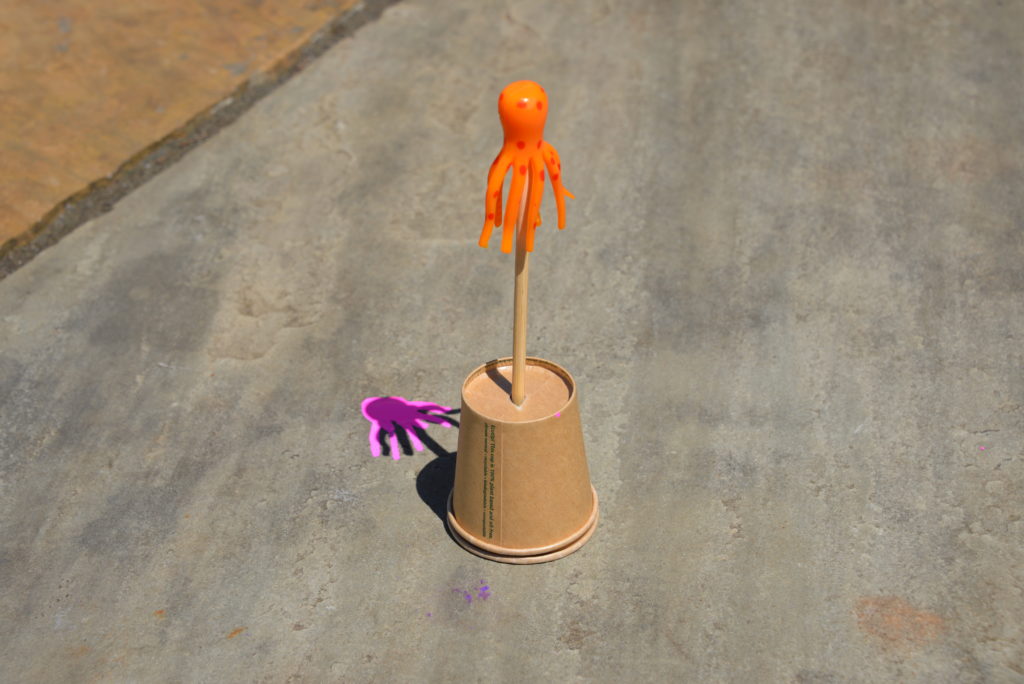
Instructions
Carefully poke a hole through the paper cup with the wooden skewer.
If it’s a windy day you might need to place a little play dough under the cup to secure it.
Place a small toy on top of the skewer and use the chalk to draw the shadow.
Draw the shadow every hour and watch how the size and shape changes.
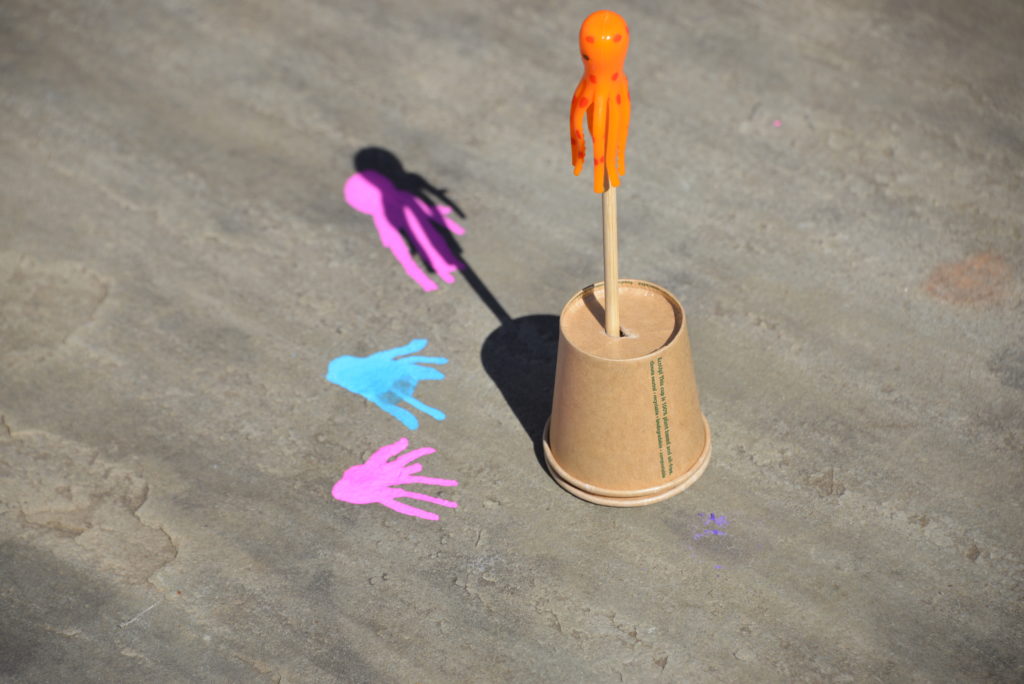
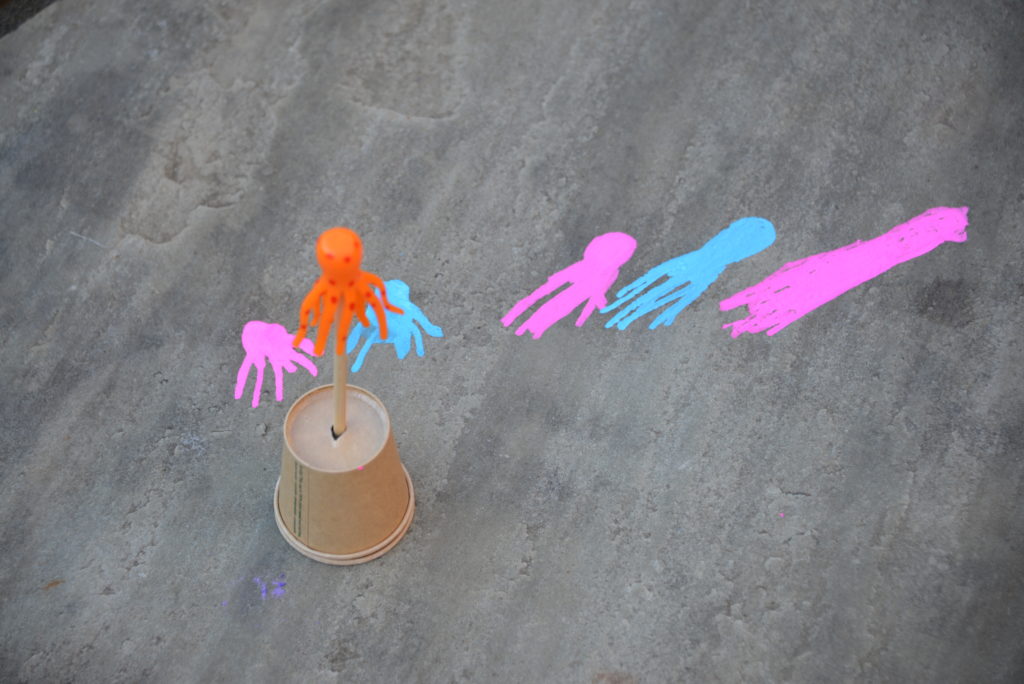
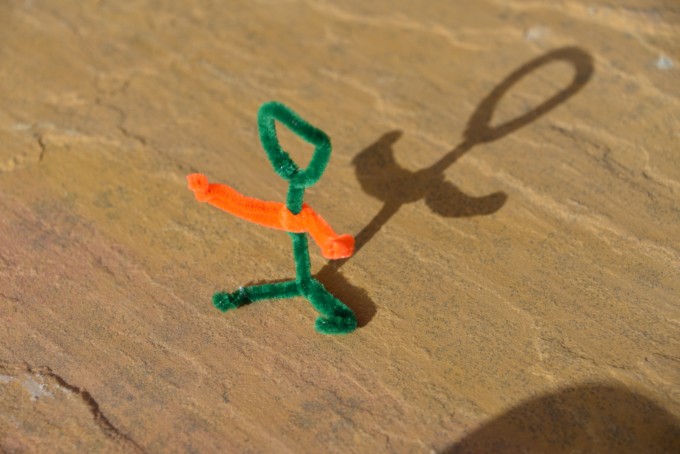
Another idea is to make a figure from a pipe cleaners and draw the shadow as it changes.
Why do shadows change during the day?
You can see that my octopus shadows became longer as time went on. This is because I started drawing the shadows at about 1pm and finished at 4pm so the sun was lower in the sky for the later drawings.
The length of a shadow depends on how high the sun is in the sky. A low sun gives a longer shadow than when the sun is high in the sky.
If the sun is directly above, you might not see any shadows!
Science concepts
- light
- shadows
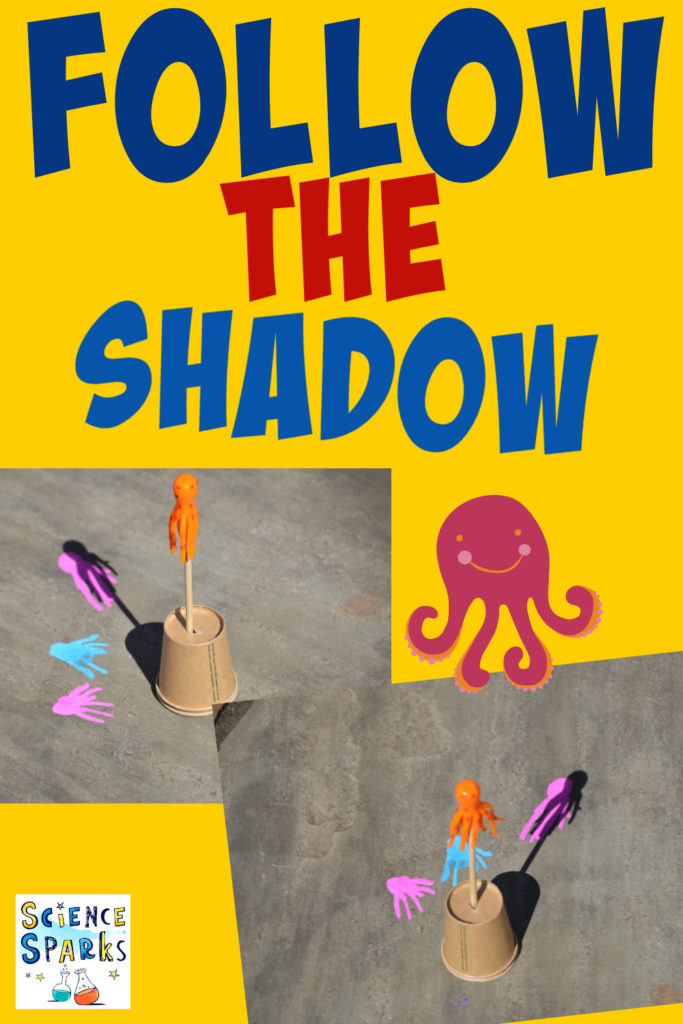
Last Updated on June 20, 2022 by Emma Vanstone

Leave a Reply